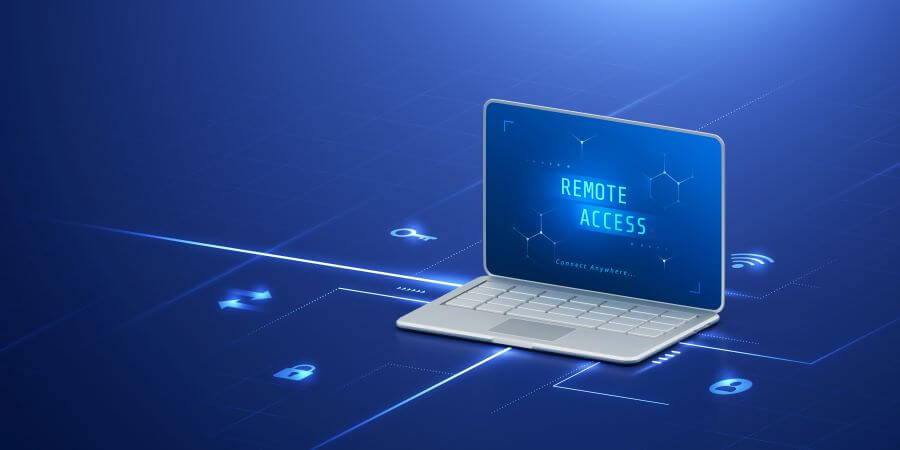In today’s fast-paced business environment, agility is no longer a bonus—it’s an essential requirement for companies seeking to maintain their competitive edge. Businesses must be able to adapt quickly to changing demands, whether it’s from customers, supply chains, or technological advancements. Secure remote solutions have emerged as key tools in supporting this agility, enabling businesses to operate seamlessly while keeping sensitive data secure. With the right remote solutions, companies can remain flexible and responsive, even in the face of challenges.
How Secure Remote Solutions Enable Flexibility
Remote work isn’t just about letting employees work from anywhere—it’s about creating an infrastructure that allows businesses to function efficiently, regardless of location. Secure remote access solutions offer businesses the flexibility to respond quickly to changes, such as sudden shifts in workforce distribution or the need for real-time collaboration between geographically distant teams.
The ability to securely access critical systems and data from any location enhances not just employee productivity, but also organisational resilience. Secure remote solutions provide safe access to enterprise systems, allowing employees to complete tasks without having to be physically present at the office. This flexibility is particularly useful for industries like manufacturing and services, where rapid access to information can make the difference between meeting a deadline or falling behind.
Overcoming Common Challenges in Remote Work
While remote work offers numerous benefits, it is not without its challenges. For many businesses, ensuring secure access to critical systems without compromising data is a major concern. This is especially true for organisations handling sensitive information, such as financial institutions or healthcare providers.
Additionally, maintaining a high level of team collaboration while working remotely can be tricky. The absence of face-to-face communication can lead to misunderstandings or delays, particularly when collaborating on complex projects.
However, with secure remote solutions in place, many of these challenges can be mitigated. Tools such as multi-factor authentication and end-to-end encryption ensure that remote access remains secure, while collaboration platforms allow for real-time communication and file sharing. These measures help businesses maintain their agility while addressing security and productivity challenges associated with remote work.
Best Practices for Implementing Remote Access Solutions
Implementing remote access solutions requires careful planning to ensure that security, efficiency, and user experience are all accounted for. A significant area where remote access is invaluable is SAP systems, given their critical role in business operations. When setting up SAP Remote Access, businesses need to focus on robust security protocols to safeguard sensitive data, particularly when handling financial or supply chain information.
Ensuring secure Remote Access for SAP means not just protecting data but also providing a seamless experience for users. Employees need to be able to access the system without unnecessary friction, which is why many businesses opt for a SAP Remote Desktop solution. With a Remote Desktop for SAP, staff can work efficiently from any location, without sacrificing the system’s usability or performance.
To get the most out of your remote access setup, consider the following best practices:
- Deploy encryption to protect data being transferred between the server and the remote desktop.
- Enable multi-factor authentication to verify user identities and prevent unauthorised access.
- Regularly update security protocols and software to ensure that your system is equipped to handle new threats.
- Optimise user experience by choosing a remote desktop solution that balances performance with security, ensuring that employees can access critical systems without delays.
By focusing on these best practices, businesses can create a remote access environment that not only enhances agility but also ensures long-term security and functionality.
Enhancing Collaboration and Productivity with Remote Tools
Remote work has transformed how teams collaborate. While traditional in-person meetings and office setups foster collaboration naturally, remote work requires more deliberate tools and strategies to maintain the same level of productivity.
Remote access solutions can provide the foundation for improved collaboration. With the right tools, teams can share files securely, communicate in real-time, and even work on the same documents simultaneously. This ensures that projects stay on track and that employees remain engaged, even when they’re working from different locations.
Video conferencing tools, secure document sharing platforms, and integrated communication channels all contribute to maintaining productivity. When combined with secure remote access systems, these tools ensure that teams can continue working efficiently without compromising the quality of their output.
Future-Proofing Your Business with Scalable Technology
As businesses grow, their technology needs evolve. What might work for a small, local business won’t necessarily suit a company that’s expanding internationally or scaling rapidly. This is where scalable remote access solutions become invaluable. They offer the flexibility to grow alongside the company without requiring major overhauls in infrastructure.
Scalable remote solutions also provide the opportunity to incorporate new technologies as they emerge. Whether it’s integrating advanced cloud computing systems or adopting more robust cybersecurity measures, having a scalable remote access solution ensures that a business remains adaptable and resilient.
Additionally, by investing in scalable solutions, businesses can future-proof their operations, reducing the risk of having to constantly update or replace their systems. This not only saves costs in the long term but also ensures continuity and reliability, even as the business environment continues to shift.


